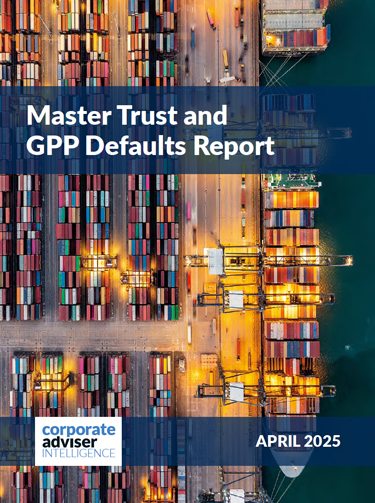As the government pushes forward with its Mansion House reforms, pension providers are under pressure to improve outcomes, scale to £25 billion, and offer access to private markets.
TO DOWNLOAD A PDF COPY OF THE REPORT CLICK HERE
Many schemes still rely on legacy strategies and face low adoption of new models, amid concerns over rising charges. This has led to a rethink of how value, cost, and delivery should be balanced, though opinions remain divided. The introduction of the new Value for Money (VfM) framework adds urgency, prompting debate over whether the market is evolving toward better solutions or merely following trends.
At a recent Corporate Adviser House of Lords roundtable, consultants and providers discussed the growing focus on value-driven outcomes, private market integration, and dual-pricing strategies — and the challenges these present for the market.
The Pension Investment Review and the VfM framework are designed to drive improved member outcomes by holding schemes accountable through more rigorous performance benchmarking.
These regulatory shifts are already influencing provider behaviour, from revisiting legacy lifestyle strategies and rethinking growth asset allocations, to accelerating the use of private markets and introducing dual-pricing structures.
However, Standard Life head of investment propositions Callum Stewart, warned that without further reform, these legacy lifestyle pension profiles would see a significant decline in growth asset exposure over the next five years – at a time when the Chancellor is looking to boost pension funds to increase investment into growth assets.
Stewart said this is driven by inertia from deferred members, many of whom will be nearing retirement. He said currently around 70 to 80 per cent of these legacy assets are in growth funds. But with the average age of these members higher than those in auto enrolment defaults, this is set to reduce, and over a five year period, less than half of these assets may be in growth funds. “So it’s almost as if, by doing nothing, the level of participation in growth assets reduces,” he added.
Stewart said ministers appear to be listening to appeals from providers, and is hopeful that legislation will be forthcoming, allowing them to make bulk transfers from legacy schemes without seeking authorisation from each member if these are in GPP structures. “We’re very hopeful that upcoming announcements will confirm that there will be a commitment [to this].”
Providers at the event said there was an urgent need for such legislative reform — noting that as well as helping to boost growth assets enabling these bulk transfers should also deliver better outcomes for members.
Legal & General head of DC clients Jayesh Patel noted: “The non-consent transfer from GPPs just needs to happen. I think everyone here has done an exercise moving from a GPP to a master trust, and even with the best efforts, you’re only getting 60 to 70 per cent of members to move.”
Stewart said: “As a provider we have a responsibility [for these members]. We’re regulated by the FCA and operate under the consumer duty framework. But these individuals have long left the employer that set up their pension, there’s no adviser involved anymore, and we can’t physically make the change.”
However where such consent is not necessary providers are already starting to move members into more modern defaults.
Legal & General, for example has already started transitioning legacy members into its Lifetime Advantage fund, which includes private market exposure.
Patel said: “They’ve been proactively moved into the fund, and if they want to, they can opt out. When we move from legacy arrangements, whether that’s master trusts or others, members are transferred into the Lifetime Advantage fund. But if employers prefer, they can switch back to the TDF option. The choice is always there, because as we’ve said, some employers just aren’t ready to make that shift.”
Private Markets
Private markets are at the centre of the Mansion House reforms, offering innovative new ways to invest, and the potential of better long-term growth. Yet, integrating them into default strategies presents a challenge, due to both cost and complexity. Providers are now starting to offer default strategies that offer allocations to private markets. While there is enthusiasm from some employers for this new asset class, uptake and implementation to date remains slow and somewhat inconsistent.
Lift Financial director Suzanne McGowan said: “[Some] employers are very keen to move into private markets, but we’ve got employers that are going to take a long while to get there. So I can see that in the short term a dual approach is needed. What that will look like in the long term, I don’t know.”
Some providers are experimenting with default structures that blend traditional passive allocations with a modest exposure to private assets. Others are positioning private market access as a premium default, with members needing to opt out to a lower-cost alternative.
Aegon managing director of investment propositions Lorna Blyth said the provider is continuing to evolve its proposition in relation to private markets. She said Aegon was considering whether any single default strategy can genuinely serve a member base with diverse needs, levels of engagement, and time horizons.
Blyth said the provider is considering evolving its main default to include private markets, which would necessitate a higher price point. But she added there was likely to be a lower-cost opt out for employers who wanted to take this route.
Blyth said that making this ‘premium’ offering the main default was “the right thing to do for members”.
Blyth added that the default market may be less uniform in future as a result of these various market developments. “If you go back a couple of years, defaults were pretty much all 100 per cent passive, with some ESG screens and tilts. It feels like we might start to diverge from this a little bit more because we’ll be taking different positions on private markets and what you’re investing in are very deal-specific.
Consensus or herding?
The recent Mansion House Accord has seen 17 providers commit to invest up to 10 per cent of their default funds in private markets, with half of this allocation to UK assets. Will this lead to greater convergence again around investment strategies? There was debate among consultants as to whether this commitment reflected clear conviction from providers, regarding the investment case for private markets, or whether there was a degree of ‘herding’ around this issue at present.
Barnett Waddingham partner Paul Leandro noted: “We’ve likely seen herding, but we expect differentiation in the private market, as there’s no common consensus right now.”
He added: “That’s consistent with what my investment team is telling me. In the accumulation phase, they’re asking whether what we’re seeing in defaults is true consensus or just herding, and there’s an important difference. Their view is that it’s probably been herding so far, but they expect more differentiation in private markets, because there’s no clear consensus at the moment. There’s also no agreement on timing or approach, we’re seeing all sorts of philosophies coming from providers and asset managers.”
Dual approach strategy
Among the most tangible shifts in strategy is the emergence of dual default approaches. Some schemes are now offering two parallel defaults, one lower-cost and passive, the other higher-fee but including access to private markets and other long-term assets.
Patel says: “We operate a dual approach, our target date fund includes a small allocation to private markets, while our alternative default, the Lifetime Advantage Fund, has a 15 per cent allocation to private markets. These funds run in parallel, giving members the option based on their preferences.”
For schemes offering a dual strategy approach, it is clear from the discussion that some providers will keep the low-cost default as their main option, offering private markets as an upgrade, while others will do the opposite: making the higher-cost option the main default, with an option to switch to the cheaper default in some cases. But regardless of how providers adapt their default strategies, Stewart said he was optimistic that the inclusion of private markets into the investment mix will deliver better returns for members. He said: “From our modelling over the long term, we’re over 90 per cent confident that adding a sizeable allocation to private assets will improve outcomes.”
Engagement & governance
But despite a shift towards more complex investment strategies, member engagement remains a challenge.
Redwood Employee Benefit Services managing director Jason Brice questioned how enagagers members are with these latest developments. He said: “What percentage of pension members are actually aware of it or care about it? I think that’s a significant barrier we need to overcome.”
Many members don’t understand or engage with their pension options, so even well-structured strategies could fall flat, pushing providers to stick with familiar, lower-cost solutions that may not offer the best long-term value.
Blyth added: “When we pitch, we’re still focusing on the lower-cost option, that’s what’s selling.”
There’s also a noticeable difference between schemes based on trust arrangements and newer ones.
Trust-based schemes, which generally have more sophisticated investment governance, are more comfortable adopting higher-cost, private market-rich defaults. On the other hand, less bespoke schemes tend to prefer lower-cost options, particularly when providers haven’t fully embraced private markets.
Patel noted that the take-up of higher-cost options has been mixed. He said: “For new schemes, especially where providers aren’t yet fully embracing private markets, we’re often still leading with the lower-cost option.”
However, for clients transitioning from trust-based arrangements, there’s often a greater willingness to opt for the higher-priced Lifetime Advantage Fund. Patel also pointed out that there might be a better way to engage members by tapping into their interests.
He said: “While we didn’t use terms like ‘private markets,’ about 70 per cent of members really like the fact that their investments could be helping with things like affordable housing, clean water, and clean tech.”
He argued that framing investments in these terms could be a powerful way to connect members to their pensions and encourage more active participation.
£25bn threshold
The £25 billion threshold is forcing providers to grow or merge to remain competitive. Bigger players are close to or have already met the target but smaller schemes, especially those with legacy books, have a tougher challenge.
According to the Corporate Adviser Master Trust report, nine providers have passed £25bn in total assets under management, but only five have reached that size within a single default strategy.
Patel said: “The current default is likely already at around £25 billion, and the version with private markets will probably reach that size by the end of this year.”
But for smaller providers or those stuck with legacy books, bulk transfers may be the only viable route to hit the target, if regulations change.
Pension strategies are evolving, with some providers focusing on private markets and enhanced default options. But progress is slow, and questions remain about whether members truly want, or understand, these changes.





